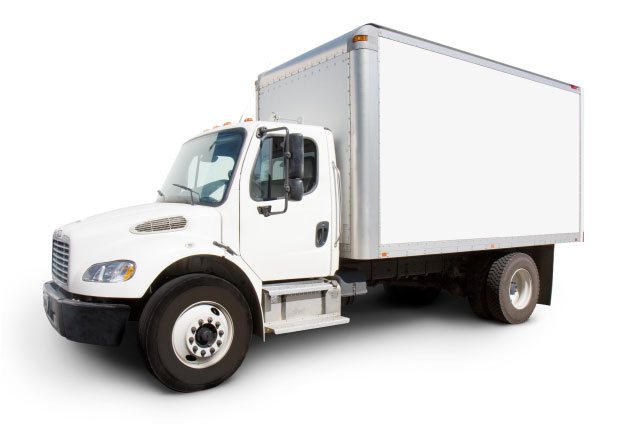Preparing Your Freezer for Storage
Posted on 18/05/2025
Preparing Your Freezer for Storage: A Comprehensive Guide
Are you wondering how to prepare your freezer for storage? Whether you're moving homes, renovating your kitchen, or simply putting your appliance away for an extended period, it's crucial to take the right steps. Not only do proper preparation methods ensure your freezer's longevity, but they also prevent unpleasant odors, mold, rust, and various technical issues. This comprehensive article will walk you through how to get your freezer storage-ready, what to do before unplugging, cleaning, and storing it, along with expert tips for optimal freezer care.
Why It's Important to Properly Prepare Your Freezer for Storage
Freezer storage preparation isn't just about aesthetics. Failing to correctly prep your appliance can lead to:
- Mold and Mildew Growth: Moisture left inside can breed spores and bacteria.
- Unpleasant Odors: Residual food particles or spills can cause your freezer to stink--even after months.
- Mechanical Issues: A rushed shutdown can mean parts freeze up or corrode.
- Reduced Lifespan: Improper storage puts unnecessary stress on components, leading to early failure.

Step-by-Step Guide: How to Prepare Your Freezer for Long-Term Storage
Step 1: Plan Ahead
- Check your timeline: It takes at least a day to properly prepare a freezer for storage. If you're moving, incorporate this into your checklist.
- Request help if needed: Large freezers can be heavy and unwieldy, so consider enlisting a friend or hiring movers for lifting and transport.
Step 2: Remove All Food and Contents
No food should remain inside during storage! Perishables left in the freezer will spoil, causing stains, odors, and potential pest issues.
- Plan ahead by gradually using up your frozen items in the weeks before storage.
- Discard or donate unneeded food.
- Have coolers with ice packs handy to transfer anything you want to keep temporarily frozen during the process.
Step 3: Unplug and Defrost Your Freezer
Give your appliance enough time to thoroughly defrost--this is a vital step in freezer storage preparation.
- Unplug the freezer: Pull it out gently (mind the cord) and ensure it's disconnected from electricity.
- Arrange towels or trays: Melting ice can lead to significant water spillage, so place towels, pans, or trays underneath the door and surrounding floor.
- Leave doors open: This speeds up defrosting. For stubborn ice, a bowl of boiled water placed inside and the door closed briefly helps soften it (never use sharp objects to chip ice away).
- Wait until all ice has melted and the interior is at room temperature before proceeding.
Step 4: Clean and Sanitize the Freezer
Cleaning your freezer thoroughly is a must before putting it into storage.
- Remove all removable parts: Take out shelves, baskets, trays, and drawers. Wash them with warm water and mild soap. Dry completely.
- Wipe interior surfaces: Use a mixture of baking soda and water (1 tablespoon baking soda to 1 quart warm water). This solution cleans, deodorizes, and eliminates bacteria.
- Sanitize high-touch areas: Wipe door seals, handles, and buttons with a diluted bleach solution (or any appliance-safe sanitizing spray).
- Thoroughly dry: Moistened areas can cause mildew growth. Let everything air dry with the doors open for several hours.
Step 5: Address Odors and Prevent Mold
Prevent odors from developing with these clever tips:
- Leave a small, open box of baking soda inside the freezer during storage (if allowed by the manufacturer).
- A few dry, crumpled newspapers can help absorb moisture and smells.
- Never use strong chemical deodorizers: They may leave residue or react with freezer materials.
Step 6: Secure the Freezer Door
The best way to store a freezer is with the door (or lid) slightly ajar. This prevents air from getting trapped inside the compartment and reduces the chance of mold or musty odors.
- Wedge a rolled-up towel or block of foam between the door and frame.
- Some models have special "storage spacers" included--check your manual!
- Ensure the door can't accidentally close and seal completely.
Step 7: Move and Store the Freezer Properly
Where and how you store your freezer matters for its long-term health:
- Choose a dry, cool location: Damp areas, garages that undergo extreme temperature swings, or non-insulated sheds can all invite moisture and rust.
- Keep upright if possible: Freezers with compressors (upright or chest models) should be stored upright to prevent oil leakage inside the system. If you must lay the unit down, consult the manufacturer and allow it to rest upright for a set period before re-use.
- Protect the exterior: Wrap the freezer in blankets or moving pads to prevent dents and scratches during transport or long-term storage.
- Maintain clearance around the freezer to allow for ventilation.
Tips for Preparing Different Types of Freezers for Storage
Chest Freezers
- Chest freezers take longer to defrost due to thicker ice build-up in corners. Monitor water collection trays closely to avoid overflow.
- Large surface area means more nooks for crumbs and spills--pay extra attention while cleaning!
- Use a stick or dedicated spacer to keep the lid propped open during storage.
Upright Freezers
- Ensure all bins, door shelves, and compartments are thoroughly cleaned and dried.
- Some upright freezers feature air-tight magnetic gaskets. Wedge the door open more than usual to ensure effective ventilation.
- Uprights tend to be heavier; use a dolly for safe relocation.
Fridge-Freezer Combos
- Follow all steps for both fridge and freezer compartments.
- Clean and dry all shared gaskets and doors; prop each section open a few inches.
- If storing long-term, consider removing the doors entirely for maximum airflow.
Additional Tips for Storing a Freezer Long-Term
- Check manufacturer's recommendations: Appliance manuals often provide detailed instructions for both cleaning and long-term storage. If you no longer have your manual, most are available online.
- Inspect regularly: If the freezer is in onsite storage, check it monthly for any signs of mold, pests, or moisture buildup.
- Never store a plugged-in freezer in an unheated area where temperatures may drop below freezing--fluids can thicken and damage internal components.
- Label and document: For renters or those putting appliances in shared storage, label the freezer with your info and keep a quick checklist of steps completed for future reference.
Reactivating Your Freezer After Storage
When you're ready to use your freezer again, follow these steps for a smooth restart:
- Inspect the interior: Check for dust, pests, or moisture. Wipe down all surfaces as a precaution.
- Ensure correct position: If the freezer was laid on its side during storage, let it stand upright for at least 4-24 hours before plugging in (check your manual for the correct duration).
- Remove any objects keeping the door ajar. Close and seal the freezer.
- Plug in and test: Monitor closely for the first few hours; listen for any strange sounds and check for proper cooling and freezing.
- Once properly cold, restock with food.
Common Mistakes to Avoid When Preparing Your Freezer for Storage
- Skipping defrosting: Never store your freezer with ice buildup. This can damage the appliance and create a watery mess upon reactivation.
- Not cleaning thoroughly: Even trace food particles can be a source of bad smells and mold.
- Sealed doors: Never tape the door tightly shut without ventilation, as this traps moisture and invites odor.
- Storing in humid or non-insulated environments: This increases the risk of rust, corrosion, or vermin infestation.
- Forgetting to stabilize during transport: Freezer components can break or loosen if the appliance tips over or shakes during transit. Always secure for moving.

FAQs on Freezer Storage Preparation
Can I store a freezer outside?
It's generally not recommended to store a freezer in outdoor environments unless it's a model rated for outdoor use. Sun, rain, humidity, and fluctuating temperatures can cause rapid degradation and rust. Keep your appliance indoors or in a climate-stable garage or basement for best results.
Do I need to clean my freezer before storing it if it looks clean?
Yes! Even if your freezer looks clean, unseen bacteria and odors can develop over time. Cleaning and drying thoroughly before storage prevents future issues.
Is it necessary to leave the door open while storing the freezer?
Absolutely! Keeping the door slightly open is one of the most important steps to preventing the growth of mold and unpleasant smells.
How long does it take to defrost a freezer?
This depends on the amount of ice buildup and the room temperature, but plan for at least 6-24 hours for full defrosting. Be patient and allow for complete ice removal.
What if my freezer develops rust during storage?
Surface rust can sometimes be removed with baking soda and water, followed by thorough drying. However, severe rust may require professional repair. To avoid this, always store your freezer in a dry, cool location with plenty of airflow.
Conclusion: The Key to Efficient Freezer Storage Preparation
Properly preparing your freezer for storage ensures your appliance remains clean, odor-free, and functional for years to come. Taking the time to defrost, clean, dry, and ventilate your freezer before putting it away is a small investment that greatly extends its lifespan. Follow our comprehensive steps--from removing all food, thorough cleaning, and drying, to securing the door open and choosing the right storage location--to give your freezer the best care possible.
By avoiding common mistakes and referring to this guide, you can confidently protect your appliance and make your next move or remodel smoother. Remember: A well-stored freezer is a ready-to-use freezer!
For more home appliance tips, maintenance guides, and storage solutions, explore our related articles and keep your household running efficiently all year round.





